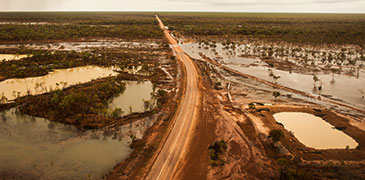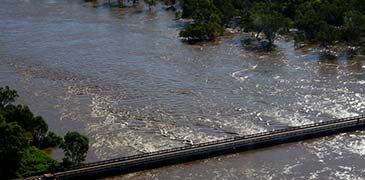Your flood plan should address the following:
- When will you leave?
- Where is your emergency kit kept?
- What will you do if all your household aren’t already together (such as at work or school)?
- Where will you go and which way will you travel there?
- If you can’t leave your property, where can you shelter safely?
- Who will be responsible for turning off electricity, gas and water supplies? Do they know how?
- Where can you find sandbags, tape for windows and tie-down materials?
- Where is your nearest evacuation centre, and what route will you take to get there? You can ask your local government about where your nearest evacuation centre might be.
Check in with family, friends and neighbours to make sure they have a plan too.
For more information, refer to the Flood Smart brochure.











